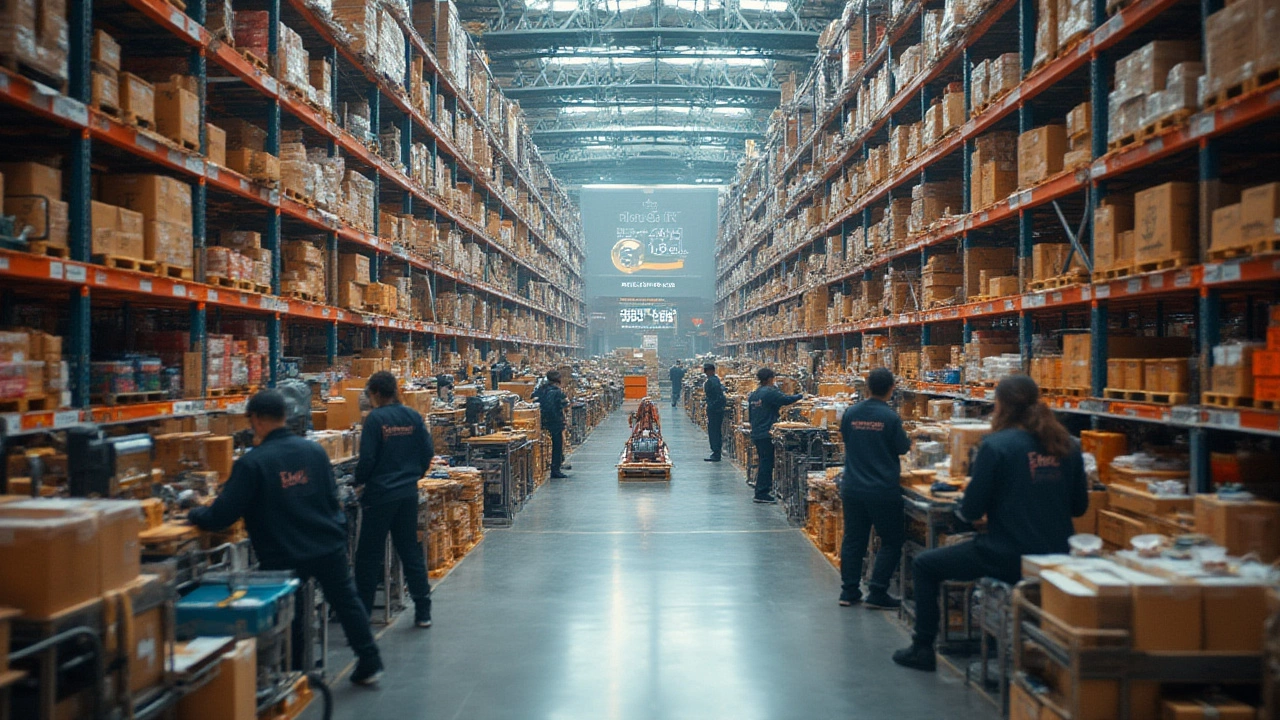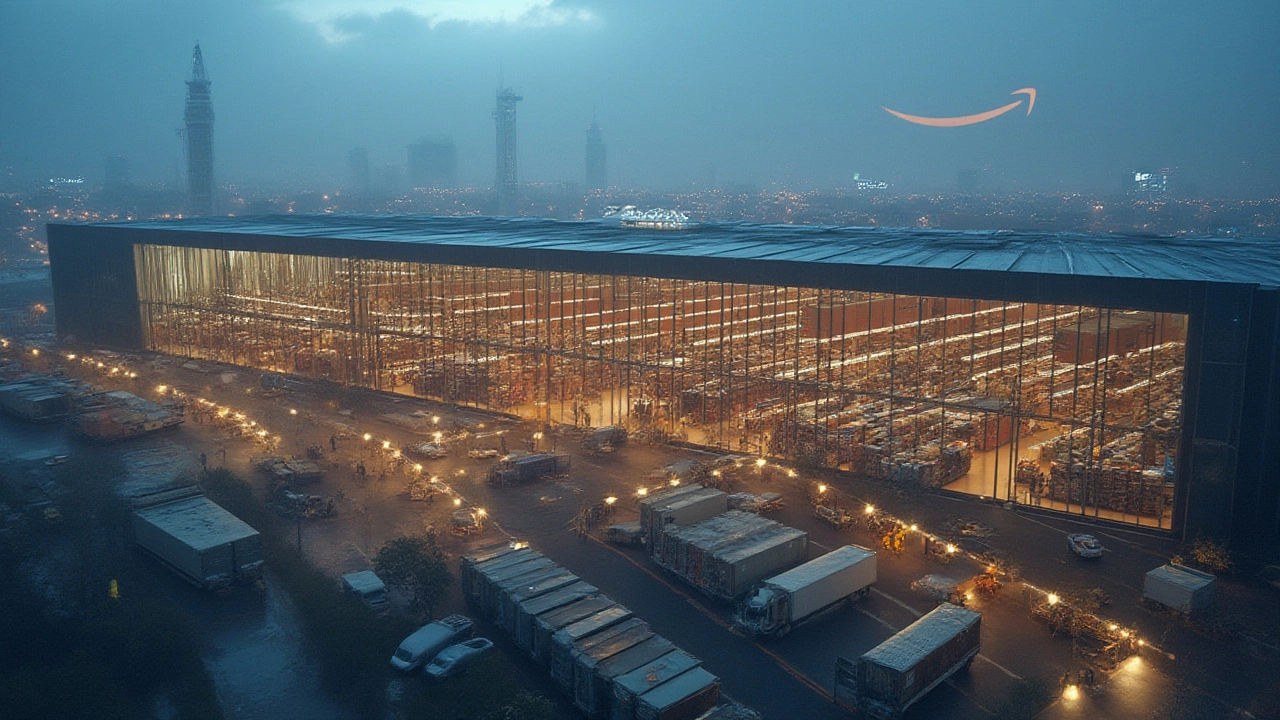If you’ve ever wondered where all your lightning-fast packages actually come from, the answer usually traces back to one of Amazon’s thousands of warehouses. But there’s one that smashes every other by sheer size. Just how massive does a company’s storage need to be to handle the pace of Prime shipping, same-day delivery, and restocking thousands of products every minute? The scale is almost hard to grasp until you dig into the numbers and the facts.
Where is the Largest Amazon Warehouse Located?
When people talk about the largest Amazon warehouse, one name jumps out: Mount Juliet, Tennessee. Sitting just outside Nashville, this behemoth became the talk of the logistics world when it opened in 2021. There’s a reason it’s always in industry headlines—the Mount Juliet fulfillment center covers a jaw-dropping 3.6 million square feet, all on one level. Imagine more than 50 football fields under a single roof. It’s not just the biggest in the U.S.—it’s often cited as the largest Amazon fulfillment center in the world, since many other big ones are spread across several stories. This warehouse handles all sorts of products, but it really flexes on bulky goods like home appliances, furniture, and TVs that would overwhelm your usual warehouse racks.
What’s shocking is the precise level of automation here (even in 2025, people still gasp when they see it). Rows and rows of Kiva robots swarm the floor, ferrying items from shelves to human workers who pack them—a blend of machine speed and human decision-making. The main dock rarely stops. Trucks track right in and out, sometimes every few minutes. You’ve got thousands of employees and robots collaborating 24/7, making Mount Juliet not just the biggest by square footage, but also the heavyweight when it comes to throughput.
It would be easy to think the crown belongs in a bigger metro area, like Los Angeles or New York, but Tennessee’s central location, highway connections, and access to air hubs like Nashville International Airport give it an edge. Amazon’s strategy is to get as close as possible to clusters of customers; Mount Juliet means same-day delivery for millions in the Southeast. If you’re curious about security: it’s tight. Facial recognition, geofencing, and smart gates keep the supply safe from pick to pack. And inside? Few places on earth see this much inventory changing hands this fast—often several million individual items on the move at once.
How the Largest Amazon Fulfillment Center Operates Day-to-Day
The real magic here isn’t just space—it’s what they do with it. Imagine starting your day and stepping into an ocean of packages, carts, conveyor belts, and robots. The Mount Juliet center is organized by zones, each handling a different type of product. Fast-moving consumer electronics zip through one area; couches and kitchen tables, another. Tetris-obsessed robots glide along precisely mapped routes, delivering ordered items to human pickers with virtually no wasted motion.
Shift changes are as orchestrated as any assembly line. Thousands clock in and out, controlled by RFID badges and app notifications. Managers keep tabs on every part of the building with real-time dashboards, monitoring not just package flow, but also conditions like temperature and humidity if sensitive stock like cosmetics or electronics is in the house. Break rooms? Sprawling, with floor-to-ceiling windows and on-site healthcare. No wandering off to find lunch—food trucks line up outside at all hours.
What about the tech? The backbone of Mount Juliet’s operation is Amazon’s advanced warehouse management software. It calculates the best pick routes, balances workload across teams, and reroutes robots if a pathway is blocked or a zone needs backup. At any moment, thousands of orders are being tracked individually, and if an item suddenly sells out, the system redirects pickers to backup inventory—sometimes arriving from other warehouses by drone or truck in a matter of hours. Not everything is hands-off, by the way—fragile goods like glass or gourmet chocolates are still packed by skilled hands, after a final check for quality.
The volume pushed through this place each day is staggering. On Prime Day or Black Friday weekend, Mount Juliet can churn out over a million shipments daily. That means waves of orders, each timed so trucks leave every dock at just the right minute. Dock workers know to expect a symphony of beeps and flashing lights as the shipment lines fill up. It’s all calculated to the minute—deliver too early, you disrupt carriers’ schedules; too late, and you miss same-day promises. Everything is sped up by predictive analytics, so spikes in demand (like a sudden craze for air fryers after a TikTok post) don’t catch them flat-footed.

What Sets the Largest Amazon Warehouse Apart from the Rest?
Size definitely matters here, but it’s far from the only thing that separates Mount Juliet from any regular fulfillment center. Its sheer square footage is just the start. Most Amazon warehouses are multi-story, but Mount Juliet’s single-level design makes robot navigation faster and cuts down on elevator bottlenecks. With more floor space, the center stores bigger and heavier items without cramming them into tight vertical lifts or racks.
The automation arsenal is seriously next-level. Remember those Kiva robots? Only the biggest and best-stocked warehouses get the latest versions, which can handle heavier loads, work for longer without recharging, and even diagnose their own mechanical hiccups. Meanwhile, smart conveyor lines sort and package different sized parcels, then sling them onto tracked carts that whisk them to waiting trailers. Visual inspections are no longer the domain of harried humans; computer vision systems flag damaged packaging or misplaced items before products even leave the shelf.
Energy efficiency is another cornerstone. Massive solar panels line the rooftop, and the lighting is all motion-sensitive, so empty areas don’t waste power at night. Temperature regulation counts—if you’re storing cosmetics in Tennessee’s humid summers, you need serious climate control. Add in rainwater harvesting and electric charging bays for Amazon’s growing fleet of Prime electric vans, and you can see the push to keep the center not just big, but green. Every delivery moves a little cleaner and faster as a result.
What’s it like for workers? Amazon has leaned hard into worker amenities here. There are on-site gyms, collaboration hubs, and lounge areas—an uncommon upgrade for the warehousing world. They even have training zones where employees practice package handling and robotics operation before getting out on the main floor. While critics sometimes point out the challenges of working at this breakneck pace, many find perks, competitive pay, and upskilling opportunities make Mount Juliet more than “just a warehouse.”
Amazon also pilots some of its wildest new ideas here. In 2024, this was one of the first centers to test out fully automated shelf-scanning drones, which do overnight inventory with laser-precise scanning and real-time corrections. The data from these pilots often winds up shaping how all Amazon fulfillment operates, offering a sneak peek into the future of logistics for anyone watching closely.
Interesting Facts, Tips, and What This Means for Your Deliveries
Let’s just say: if you’ve ever gotten a king-sized mattress to your doorstep in under 48 hours, you probably have this place to thank. Here are some things about the world’s largest Amazon fulfillment center that might surprise even logistics nerds:
- On an average day, over 10 miles of conveyor belts keep products moving from inbound dock to outbound truck—almost enough to stretch from Mount Juliet to downtown Nashville.
- Its main robotic “fleet” clocks more than 1 million collective hours of operation each month. Reliability is key: if a robot stalls, the system automatically dispatches a human tech to get things moving in under five minutes.
- During peak season, Amazon hires thousands of temporary workers to keep things moving, but the majority of floor space is still handled by robots.
- Mount Juliet’s design sets the standard for Amazon’s eco-friendly warehouse rollout—every new center built since 2022 borrows sustainability blueprints first tested here.
- You can trace your order’s path in the Amazon app, and if you’re close enough to the warehouse, odds are your package passes through Mount Juliet at some stage.
If you care about the quality and speed of your Amazon orders, the Mount Juliet center is a game-changer. Its tech and human force team up to process and ship items faster than almost any competitor. For sellers on Amazon, this location opens up urgent fulfillment programs, letting them reach buyers in key markets with same-day service—something that was almost unthinkable a decade ago. If you run a small business, using this center as a distribution point can shrink your average delivery window by days.
Want to see these machines in action? While public tours are rare, Amazon sometimes does virtual tours through their website, giving sneak peeks at the floor, the robots, and the dock action. And if you’re ever driving near Nashville, keep an eye out for that colossal building near the interstate—it’s not just a warehouse, but the future of ecommerce moving before your eyes.
The largest Amazon warehouse isn’t just about storing stuff. It’s a living example of how tech, logistics, and sheer physical scale can change how people shop. Next time you hit Prime and your package lands in less than a day, think of the human-networked robots whirring away in Mount Juliet, Tennessee—silent heroes of your doorstep delivery.


